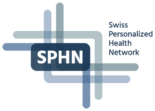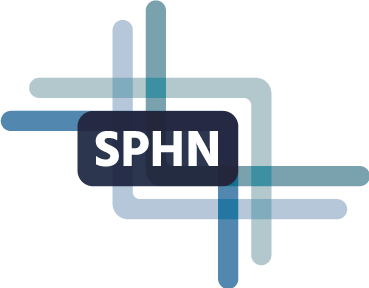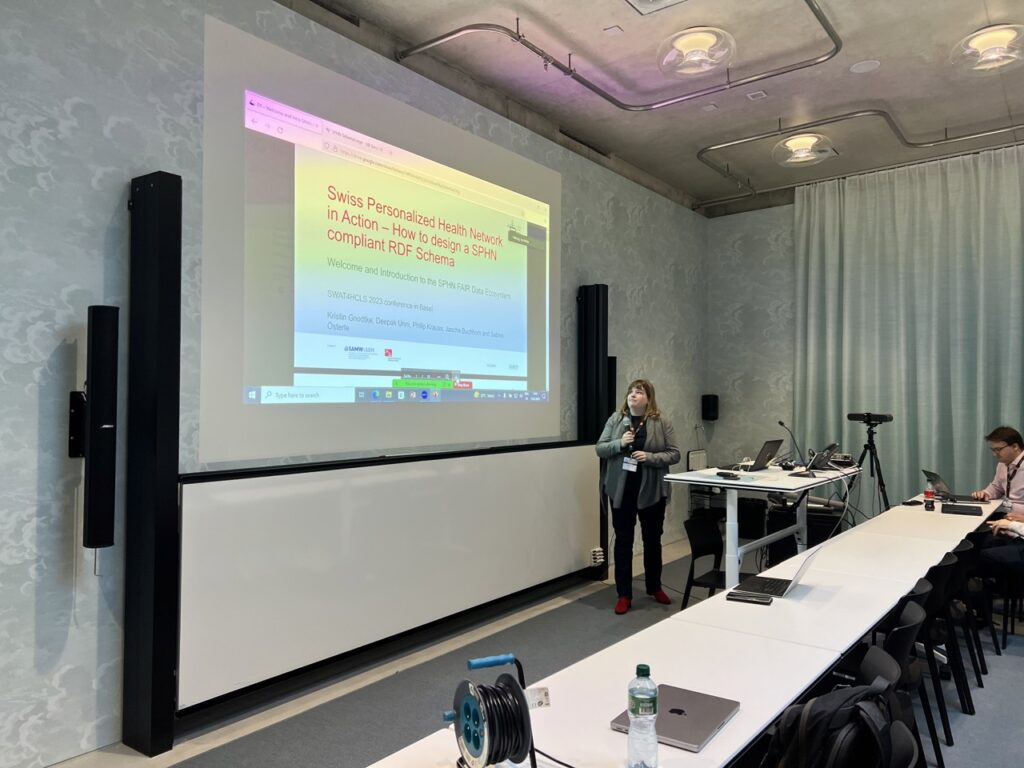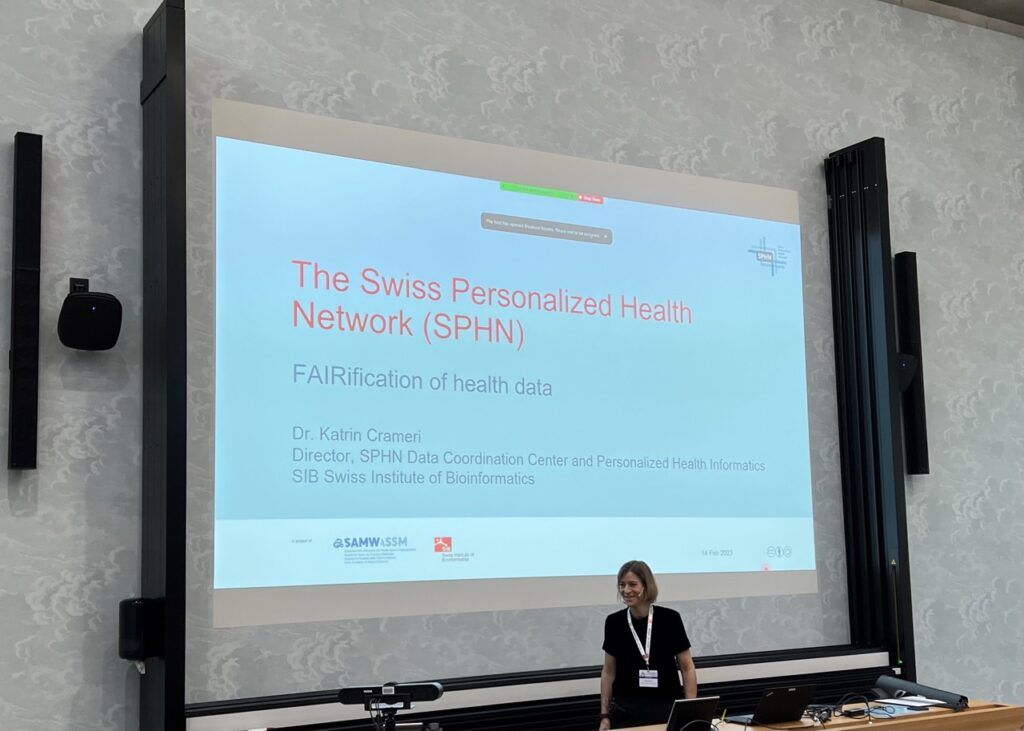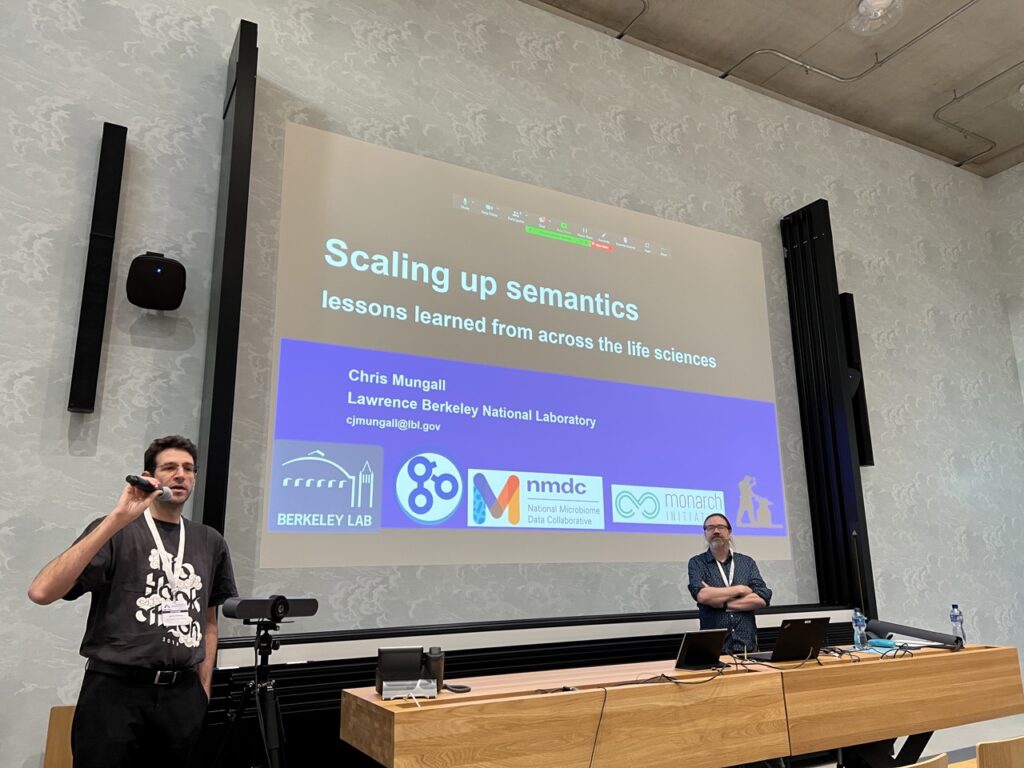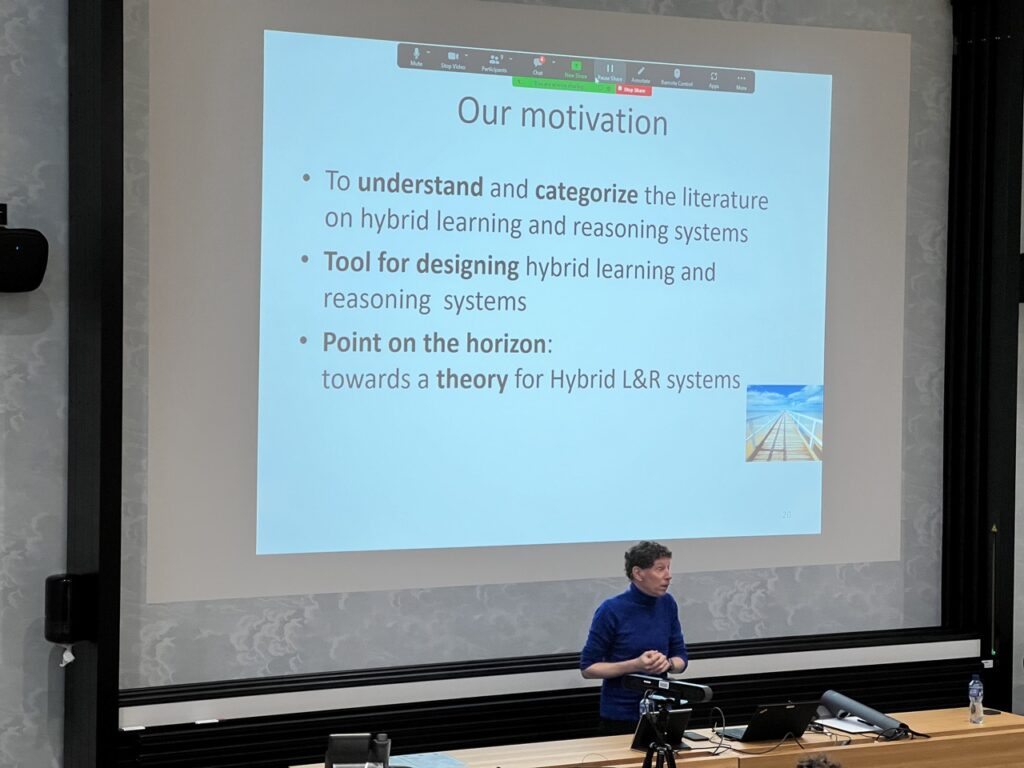By: Deepak Unni, Scientific Coordinator, SIB PHI Group
The use of Semantic Web technologies for organizing knowledge has had increasing adoption in recent years. Such technologies provide a way to organize biological and biomedical knowledge to represent complex interrelationships within and across sub-domains of biology. Recently, I had the opportunity to attend the SWAT4HCLS 2023 Conference (https://www.swat4ls.org/) that happened in Basel in early February. The conference was organized by the SWAT4LS community - a group of experts, advocates, and enthusiasts interested in semantic web technologies and their application to solving data challenges in the life sciences. The conference was attended by a wide range of participants including software developers, data engineers, data stewards, machine learning engineers, ontologists, bioinformaticians, and biologists.
The conference had a series of keynotes, technical talks, poster sessions, workshops, and hands-on tutorials. Day 1 of the conference started with a keynote from Dr. Katrin Crameri, director of the Swiss Personalized Health Network (SPHN) Data Coordination Center, who talked about “The FAIRification of health data in SPHN” and thus kicking off the conference on a high note with topics such as FAIR principles, personalized health research, and the effort it takes to make it all happen.
Day 2 of the conference started with a keynote from Chris Mungall, Staff Scientist, Lawrence Berkeley National Laboratory who talked about “Scaling up Semantics - lessons learned from across the life sciences” and made a key observation that data modeling paradigms (regardless of the technologies used) are iterative and that the recent explosion of Large Language Models is another technology that researchers can use to augment and improve their data modeling efforts.
During both days, the technical talks included a wide variety of topics including ontology development, data integration, machine learning, and Natural Language Processing. The poster sessions provided presenters and attendees an opportunity to discuss their work, share ideas, and strike new or renew existing collaborations.
The conference ended with a keynote from Frank van Harmelen who spoke about the integration of learning and reasoning systems together to what is now known as Hybrid AI and how a hybrid approach is better than the sum of its parts.
One of the main highlights of the SWAT4HCLS conference was the hands-on tutorials, which provided participants with practical experience in using semantic web technologies, especially for life science applications. SPHN had a tutorial session titled “Swiss Personalized Health Network in Action - How to design a SPHN compliant RDF Schema” which provided attendees with hands-on experience on working with the SPHN Semantic Interoperability Framework to design their own concepts, and generate an RDF Schema for their own project.
All in all, the conference provided a useful avenue for researchers, software developers, and ontology engineers to share their work, discuss openly what works and what doesn’t, and take time to look forward to what comes next in the age of Large Language Models and how it affects or augments the efforts in life sciences.
All images: copyright Deepak Unni
